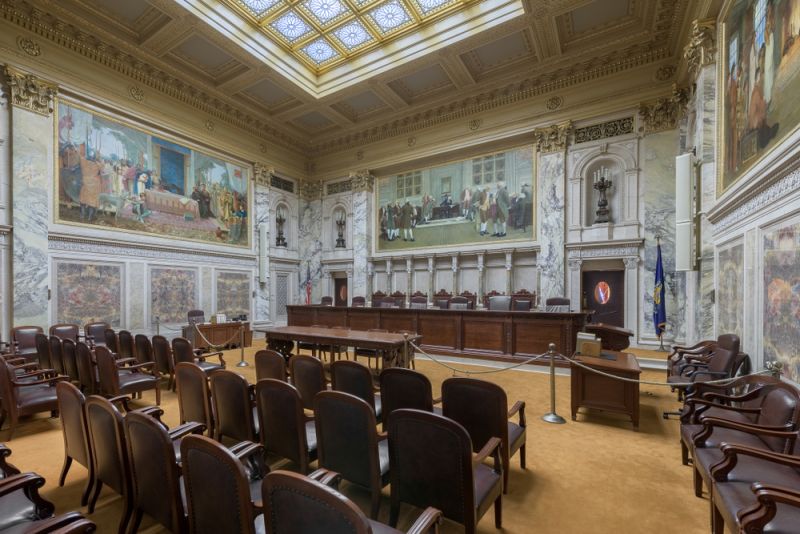White House condemns Nicaraguan dictatorship’s latest attacks against the Catholic Church

 John Kirby, coordinator of the National Security Council for Strategic Communications at the White House. / Credit: EWTN News Nightly
John Kirby, coordinator of the National Security Council for Strategic Communications at the White House. / Credit: EWTN News Nightly Washington, D.C. Newsroom, Jun 1, 2023 / 14:15 pm (CNA).
The Biden administration on Wednesday condemned Nicaraguan dictator Daniel Ortega’s attempts to discredit the Catholic Church by accusing it of an illegal money laundering scheme.
National Security Council Coordinator for Strategic Communications John Kirby called the latest attacks on the Catholic Church “unacceptable” and said the administration is acting to “promote accountability.”
Kirby’s condemnation of the Nicaraguan dictatorship’s latest targeting of the Catholic Church came in response to a question raised by EWTN White House Correspondent Owen Jensen during the May 31 press conference.
On May 27 the Nicaraguan National Police, controlled by the dictatorship of President Daniel Ortega and his wife, Vice President Rosario Murillo, published a statement accusing the Catholic Church of various crimes, including money laundering by the Diocese of Matagalpa.
“The dictatorship there continues its persecution of Catholics,” Jensen said. “The latest, accusing the Catholic Church in Nicaragua of money laundering. Human rights defenders say that is absolutely baseless.”
“Daniel Ortega has imprisoned Bishop Alvarez for decades, expelled 32 nuns from the country, confiscated Church buildings, shut down media outlets. Quite simply, what is the White House message to Daniel Ortega?” Jensen asked.
Kirby responded by saying: “There’s been a dramatic deterioration of respect for democratic principles and human rights by the Ortega-Murillo regime, including the harassment and imprisonment of democratic leaders, members of political opposition parties, faith leaders, as you rightly said, including from the Catholic Church, students, and journalists.”
“This is all unacceptable. We condemn these actions,” Kirby continued. “We’ve already taken a number of actions to promote accountability for the Ortega-Murillo regime’s actions, including by imposing sanctions, and will continue to do so.”
In an attempt to continue covering up their human rights abuses, Nicaragua is now accusing the Catholic Church of money laundering in the country. NSC Coordinator for Strategic Communications, John Kirby, responds to the Ortega regime’s abuses on behalf of the White House. pic.twitter.com/E7BFwGRsN0
— EWTN News Nightly (@EWTNNewsNightly) May 31, 2023
For years, the U.S. State Department has levied several sanctions against the Ortega regime, including sanctions on Nicaraguan officials and state-owned companies for repression and anti-democratic actions.
Most recently, on April 19, Secretary of State Antony Blinken issued a statement announcing U.S. sanctions on three Nicaraguan judges who, according to Blinken, “played a role in stripping over 300 Nicaraguans of their citizenship, leaving many of these individuals stateless.”
In a June 2022 press statement, the State Department accused the Ortega regime of stealing the 2021 Nicaraguan election.
“Following months of repression and the imprisonment of more than 40 democratic leaders, including seven potential presidential candidates, opposition members, journalists, students and members of civil society, the Ortega-Murillo regime stole an election that denied Nicaraguans their ability to choose their own government. By declaring victory after the fraudulent election, the regime entrenched itself in power and established a dynastic dictatorship,” the release said.
Despite these actions by the Biden administration, the situation in 2023 appears to have only worsened for both ordinary citizens and the Catholic Church in Nicaragua.
Just this May 18, an Ortega regime official media announced the “voluntary dissolution” of Immaculate Conception Catholic University, a seminary for the Archdiocese of Managua.
On Feb. 10, Bishop Rolando Álvarez Lagos of the Diocese of Matagalpa was sentenced by the regime to 26 years and four months in prison on the charge of being a “traitor to the homeland.”
Álvarez’s former diocese is the one now being accused by the regime of the money laundering scheme.
In a May 29 statement to ACI Prensa, CNA’s Spanish-language news partner, Félix Maradiaga, former presidential candidate and exiled human rights defender, stated that “it’s impossible for the police to have found this alleged illicit money in the Diocese of Matagalpa, because that diocese has been, both the chancery and many of the parishes, under police intervention during the last six months.”
“That’s absolutely unacceptable, but it is also Orwellian. It’s ridiculous that the same chancery from which Bishop Rolando Álvarez was taken away is now designated as the locus of illegal acts,” said Maradiaga, who was deported to the United States on Feb. 9 along with more than 200 other former political prisoners.



